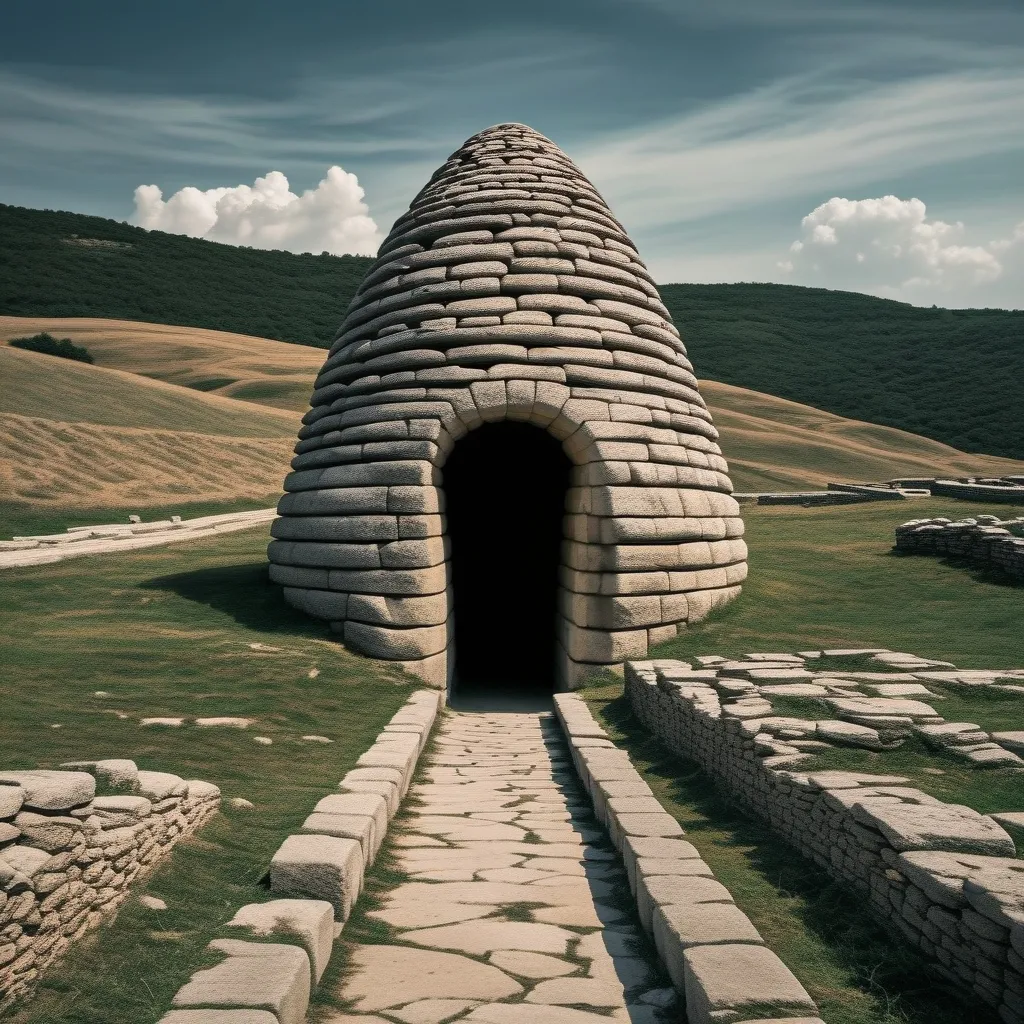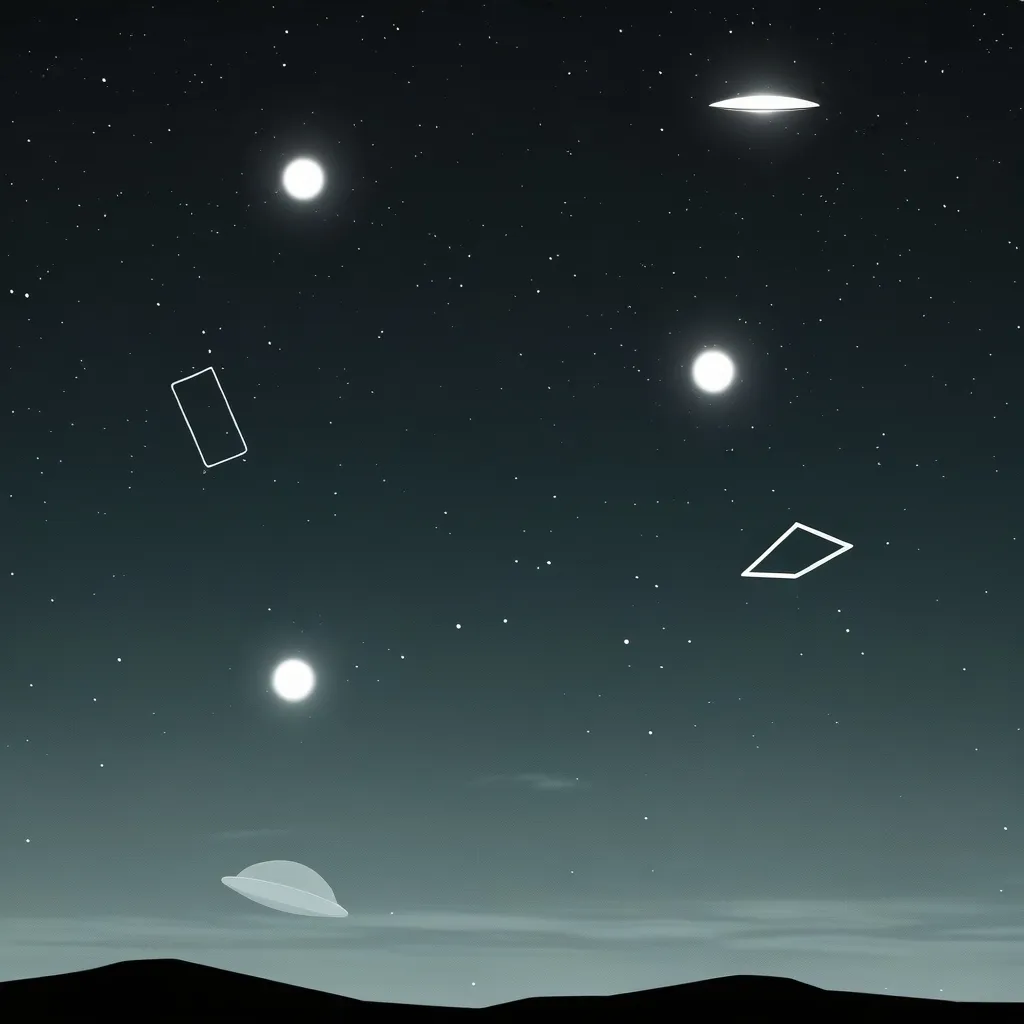Nestled in the heart of Bulgaria, the Pomorie Tomb stands as a captivating enigma that has puzzled historians and archaeologists for centuries. This ancient structure, often called the “hollow mound” by locals, is a fascinating blend of mystery and architectural marvel. Is it a forgotten mausoleum, a sacred monument, or something entirely different? Let’s dive into the intriguing world of the Pomorie Tomb and uncover its secrets.
Picture this: a beehive-shaped structure rising from the Bulgarian landscape, its unique design catching your eye immediately. That’s the Pomorie Tomb for you, a structure that’s as puzzling as it is beautiful. Dating back to the 2nd or 3rd century AD, this tomb is a perfect mix of Thracian and Roman architectural styles. It’s like the ancient builders decided to have a creative brainstorming session and came up with something truly one-of-a-kind.
The tomb’s design is pretty mind-blowing when you think about it. It’s got this long corridor (fancy word alert: dromos) that stretches for 22 meters. Imagine walking down that path, feeling the weight of history with every step. At the end, you’d find yourself in a round chamber made of stone and bricks. But here’s the kicker – right in the center is a hollow column that connects to the outer wall. It’s like ancient Jenga, but way more impressive.
Now, you might be wondering, “What’s the big deal about a hollow column?” Well, my friend, that’s where things get interesting. This design is unique in the Balkan Peninsula, and it’s got architects and historians scratching their heads. It’s like finding a smartphone in a medieval painting – it just doesn’t fit with what we know about that time period.
So, who built this place, and why? The smart money is on it being a mausoleum for some big shots from back in the day. We’re talking about the Anhialo family, who were kind of a big deal in ancient Pomorie. Think of them as the Kardashians of their time, but with more togas and less Instagram.
The tomb screams “I’m rich!” with its grand design and fancy artifacts found inside. Jewelry, weapons, you name it – if it was expensive back then, it was probably in this tomb. It’s like an ancient version of MTV Cribs, but for the afterlife.
But here’s where it gets really interesting. This wasn’t just a place to store dead rich people. Nope, it was also a spot for some serious religious action. Picture ancient priests performing mysterious rites in that long corridor. The hollow column might have been like a cosmic antenna, connecting the earthly realm with the spirit world. Pretty wild, right?
Now, you might be thinking, “Okay, so it’s an old tomb. What’s the big mystery?” Well, buckle up, because this is where things get really puzzling. Despite all the research and digging (both literal and figurative), we still don’t know for sure who was buried there or what exactly the tomb was used for. It’s like trying to figure out the plot of a Christopher Nolan movie – the more you learn, the more confused you get.
This mystery has led to some pretty wild theories. Some folks think it’s just a fancy burial site, while others believe it’s part of some complex religious setup. It’s like ancient Bulgaria’s version of Area 51 – everyone’s got a theory, but no one knows for sure.
And let’s not forget about the treasure hunters. Oh boy, have they had a field day with this place. For years, locals have been spinning tales about hidden treasures in the tomb. It’s like the ancient Bulgarian version of “National Treasure,” minus Nicolas Cage and plus a lot more superstition.
But here’s the thing – the Pomorie Tomb isn’t just some isolated curiosity. It’s part of a much bigger picture. Bulgaria is basically one giant archaeological playground, with thousands of ancient mounds scattered across the country. Each of these tells a story about the Thracians, the ancient folks who called this place home from way back in the 1st millennium BC.
Think about it – while the Romans were building their empire and the Greeks were philosophizing, the Thracians were out here creating their own incredible civilization. They weren’t just sitting around twiddling their thumbs. They were building complex societies, creating amazing art, and apparently, constructing some seriously mind-bending tombs.
Take the Starosel Kings Complex, for example. This place has got under-hill temples and royal burials that date back to the 5th century BC. It’s like the ancient Thracians decided to go all “Hobbit” on us and build their important stuff into hillsides. And let’s not forget about the tombs in Kazanlak, Aleksandrovo, and Sboryanovo. These places are like time capsules, giving us glimpses into a world that’s long gone but still fascinates us.
But back to our star of the show – the Pomorie Tomb. What makes this place so special is how it keeps us guessing. It’s like that one friend who always has a new surprise up their sleeve. Just when you think you’ve got it figured out, bam! A new theory or discovery comes along and shakes everything up.
And isn’t that what makes history so exciting? It’s not just about memorizing dates and names. It’s about solving puzzles, imagining lost worlds, and sometimes, just standing in awe of what our ancestors were capable of. The Pomorie Tomb does all of that and more.
So, next time you’re planning a trip and want something a little different, why not give ancient Bulgaria a shot? Stand in front of the Pomorie Tomb, feel the breeze that’s been blowing for centuries, and let your imagination run wild. Who knows? Maybe you’ll be the one to crack the mystery wide open.
In the end, whether the Pomorie Tomb was a super fancy grave, a religious hotspot, or something we haven’t even thought of yet, one thing’s for sure – it’s a reminder of how awesome and mysterious our past can be. It stands there, silent but full of stories, challenging us to uncover its secrets.
As we keep digging (both literally and figuratively) into sites like the Pomorie Tomb, we’re not just learning about ancient history. We’re connecting with our ancestors, understanding our roots, and maybe even learning a thing or two about ourselves. After all, those ancient Thracians weren’t so different from us – they loved, they lived, and they left behind some pretty cool stuff for us to puzzle over.
So here’s to the Pomorie Tomb and all the other mysterious ancient sites out there. May they continue to baffle us, inspire us, and remind us that sometimes, the best stories are the ones that keep us guessing. Who knows? Maybe one day we’ll solve the mystery of the “hollow mound.” But until then, let’s enjoy the ride and keep wondering. After all, isn’t that what makes history so much fun?






